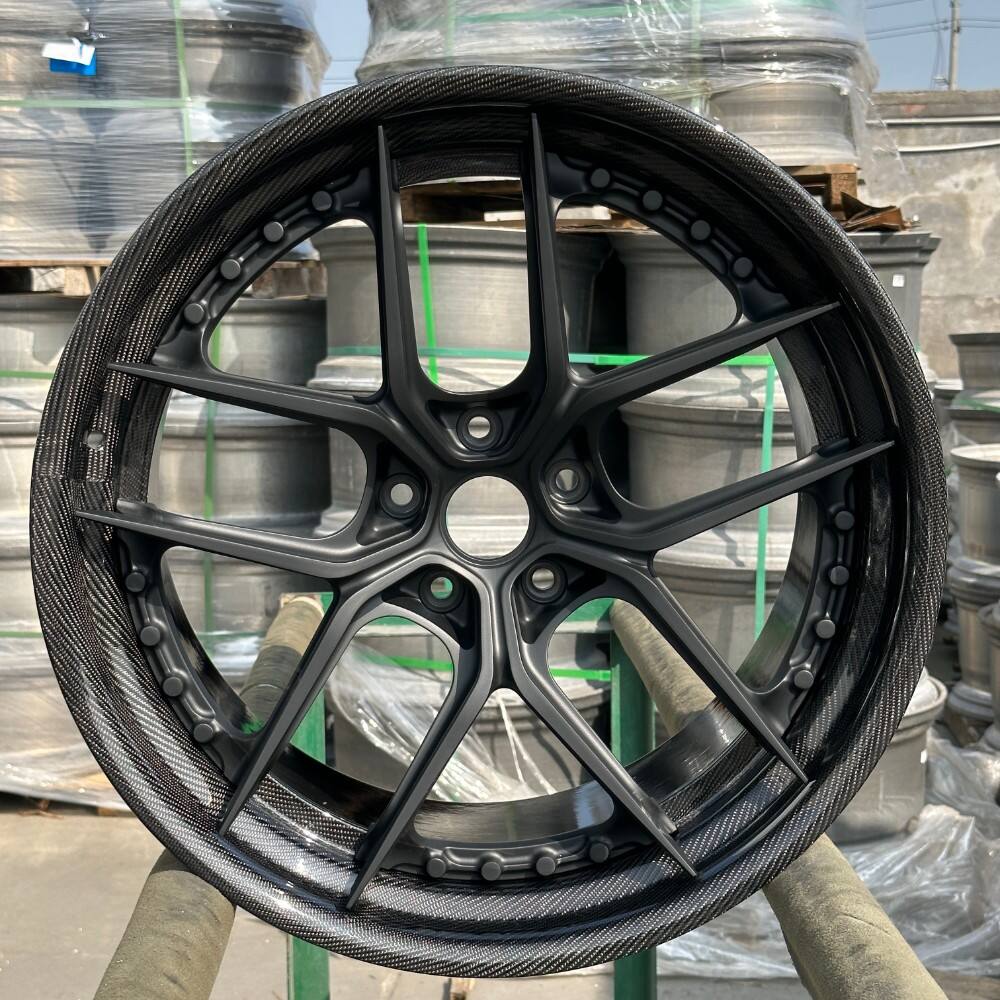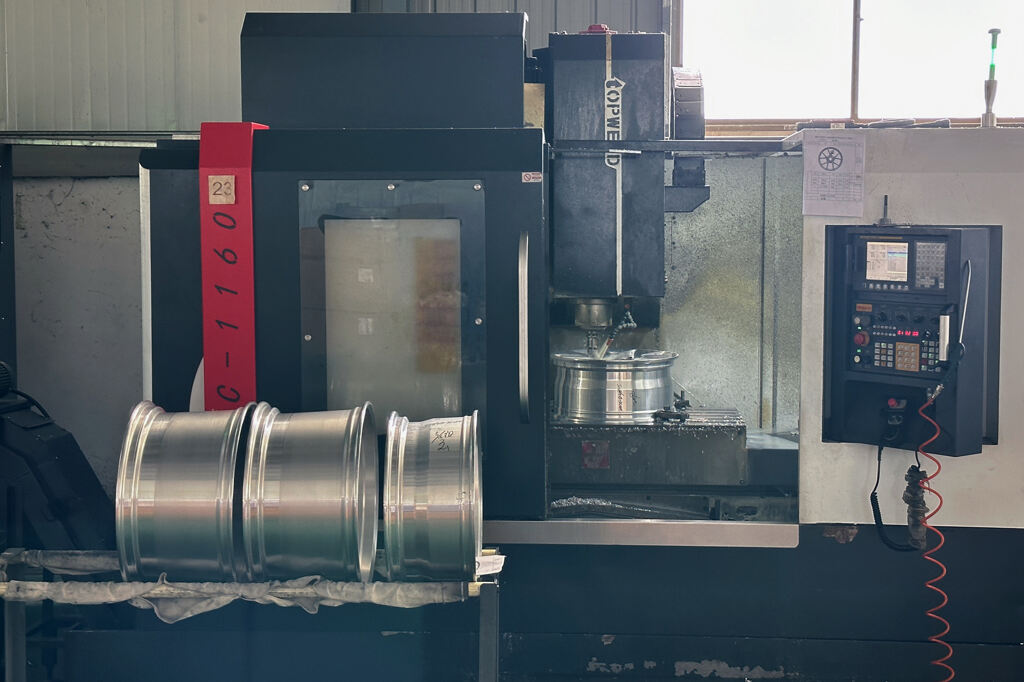What Makes 3 Piece Forged Wheels a Reliable Option foMotorsport Use
In the demanding world of motorsport, where every component must withstand extreme forces and deliver peak performance, choosing the right wheels becomes a critical decision that can make or break a racing career. Professional drivers and racing teams consistently turn to 3 piece forged wheels as their preferred solution, recognizing their superior strength, customization capabilities, and proven track record in high-stress racing environments. These advanced wheel systems represent the pinnacle of automotive engineering, combining cutting-edge manufacturing techniques with materials science to create products that excel under the most challenging conditions imaginable.
Understanding the Engineering Excellence Behind Three-Piece Construction
Modular Design Benefits for Racing Applications
The modular construction of 3 piece forged wheels offers unparalleled advantages in motorsport applications, where quick repairs and adjustments can determine race outcomes. Unlike traditional one-piece wheels, this innovative design separates the wheel into three distinct components: the center hub, the inner barrel, and the outer barrel. This separation allows racing teams to replace individual damaged sections without discarding the entire wheel assembly, significantly reducing downtime and maintenance costs during critical racing seasons.
Racing professionals particularly value the ability to modify wheel specifications between different racing conditions and track requirements. Teams can adjust offset, width, and diameter by swapping barrel sections while maintaining the same center hub, enabling precise tuning for optimal vehicle dynamics. This flexibility proves invaluable when adapting to different racing circuits, weather conditions, or tire specifications throughout a competitive season.
Material Properties and Forging Process Advantages
The forging process used in manufacturing these wheels creates a grain structure that significantly enhances strength and durability compared to cast alternatives. During forging, the aluminum alloy undergoes intense pressure and heat treatment, aligning the metal's grain structure to follow the wheel's contours and stress patterns. This process eliminates porosity and weak points commonly found in cast wheels, resulting in components that can withstand the extreme lateral forces, heat cycles, and impact loads encountered in competitive racing.
Advanced alloy compositions used in 3 piece forged wheels typically incorporate elements like magnesium, silicon, and titanium to optimize strength-to-weight ratios. These carefully engineered alloys maintain structural integrity even when subjected to temperature extremes ranging from sub-zero conditions during winter testing to the intense heat generated during extended racing sessions on demanding circuits.
Performance Characteristics That Define Racing Excellence
Weight Distribution and Rotational Mass Optimization
Weight reduction in rotating components delivers exponential performance benefits in motorsport applications, where every gram of unsprung weight affects acceleration, braking, and handling characteristics. The forged construction process allows manufacturers to create thinner wall sections while maintaining structural integrity, resulting in wheels that can be significantly lighter than cast alternatives without compromising safety or durability standards required for competitive racing environments.
The three-piece design enables engineers to optimize weight distribution across the wheel assembly, concentrating mass closer to the hub center to minimize rotational inertia. This strategic weight placement improves throttle response, reduces stress on suspension components, and enhances overall vehicle dynamics during rapid direction changes and aggressive cornering maneuvers that define modern motorsport competition.
Heat Dissipation and Thermal Management Properties
Effective heat management becomes crucial in racing applications where brake systems generate extreme temperatures that can compromise wheel integrity and performance. The forged aluminum construction of 3 piece forged wheels provides excellent thermal conductivity, efficiently transferring heat away from brake components and preventing the thermal buildup that can lead to wheel failure or performance degradation during extended racing sessions.
The modular construction allows for enhanced airflow patterns around brake components, with spoke designs optimized for maximum cooling efficiency. Racing teams often specify custom spoke configurations that balance structural requirements with cooling performance, ensuring consistent braking performance throughout race duration while maintaining the wheel temperatures within safe operating parameters.
Customization Capabilities for Competitive Advantage
Dimensional Flexibility and Fitment Options
The versatility of 3 piece forged wheels in accommodating various dimensional requirements makes them indispensable for racing teams operating multiple vehicle platforms or competing in different racing series with varying technical regulations. Manufacturers can produce wheels in virtually any diameter, width, and offset combination while maintaining consistent quality standards and structural integrity across the entire product range.
This dimensional flexibility extends to bolt pattern configurations, allowing teams to adapt wheels for different vehicle platforms without compromising performance characteristics. Racing organizations frequently change technical regulations, and the ability to modify wheel specifications quickly while maintaining proven performance characteristics provides competitive advantages that can influence championship outcomes.
Aesthetic Customization and Brand Integration
Beyond performance considerations, the ability to customize visual elements helps racing teams create distinctive brand identities while maintaining the technical excellence required for competitive success. The three-piece construction allows for different finishing treatments on individual components, enabling complex color schemes, surface textures, and branding elements that enhance sponsor visibility and team recognition.
Custom center caps, spoke designs, and barrel configurations can incorporate team colors, sponsor logos, and aerodynamic elements that complement overall vehicle aesthetics while delivering functional benefits. This combination of form and function exemplifies the sophisticated approach required in modern motorsport, where visual impact and technical performance must work together to achieve competitive success.

Durability and Reliability in Extreme Conditions
Stress Distribution and Structural Integrity
The engineering principles behind 3 piece forged wheels create superior stress distribution patterns that enable these components to withstand the extreme forces encountered in competitive racing environments. The forging process aligns the metal grain structure with anticipated load paths, creating components that efficiently transfer forces from the tire contact patch through the wheel assembly to the vehicle's suspension system without creating stress concentration points that could lead to premature failure.
Independent testing and real-world racing experience demonstrate that properly manufactured 3 piece forged wheels consistently exceed industry safety standards by significant margins, providing the reliability essential for professional racing applications where component failure can result in catastrophic consequences. The modular design also allows for regular inspection of individual components, enabling preventive maintenance strategies that maximize component lifespan and racing safety.
Fatigue Resistance and Longevity Characteristics
Racing wheels must endure millions of stress cycles throughout their service lives, from the constant flexing during cornering to the impact loads from track irregularities and aggressive driving techniques. The forged construction process creates a material structure that resists fatigue crack initiation and propagation, extending component life significantly compared to alternative manufacturing methods.
Professional racing teams report that high-quality 3 piece forged wheels often provide multiple seasons of reliable service when properly maintained, representing excellent value despite higher initial investment costs. The ability to replace individual damaged components rather than entire wheel assemblies further enhances the economic advantages while maintaining performance consistency throughout extended racing campaigns.
FAQ
How do 3 piece forged wheels compare to monoblock wheels in racing applications?
While monoblock forged wheels offer excellent strength characteristics, 3 piece forged wheels provide superior flexibility for racing applications through their modular design. The ability to replace individual components, adjust wheel specifications, and optimize weight distribution makes three-piece construction more practical for professional racing teams that require adaptability and cost-effective maintenance solutions throughout competitive seasons.
What maintenance requirements are specific to three-piece wheel construction?
Three-piece wheels require periodic inspection of the hardware connecting the individual components, including torque verification of assembly bolts and visual inspection for signs of corrosion or wear. Racing teams typically establish maintenance schedules based on track conditions and usage intensity, with more frequent inspections required for wheels used in harsh environments or aggressive racing applications.
Can 3 piece forged wheels be repaired if damaged during racing?
The modular construction allows for repair of individual components in many cases, making 3 piece forged wheels more economical to maintain than traditional one-piece alternatives. Damaged barrels or centers can often be replaced without affecting other components, while specialized repair facilities can sometimes restore damaged sections through welding and re-machining processes when economically justified.
What factors determine the optimal specifications for racing wheel selection?
Optimal wheel specifications depend on vehicle characteristics, racing discipline, track conditions, and tire requirements. Professional teams consider factors including suspension geometry, brake clearance requirements, aerodynamic considerations, and technical regulations when specifying 3 piece forged wheels. Computer simulation and testing programs help determine the ideal combination of diameter, width, offset, and weight distribution for specific racing applications.
Recommended Products
 Hot News
Hot News
-
Forged Carbon Products
2024-05-21
-
Forged Off-Road Accessories
2024-05-21
-
GVICHN Introduces Revolutionary Forged Two-Piece Product
2024-05-21







 ONLINE
ONLINE